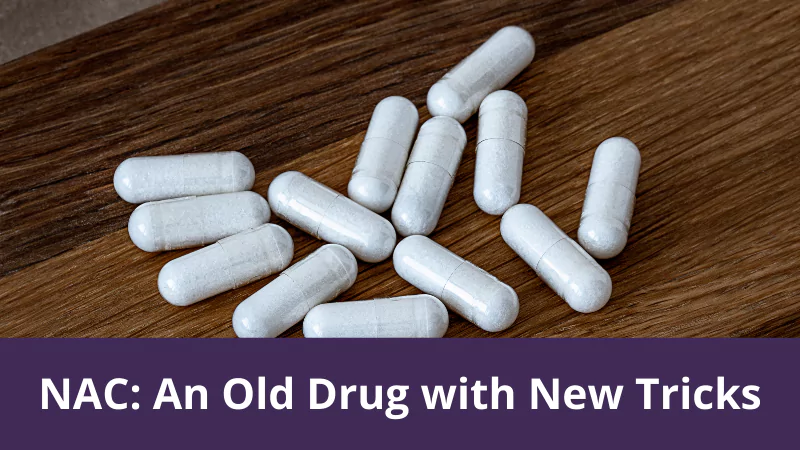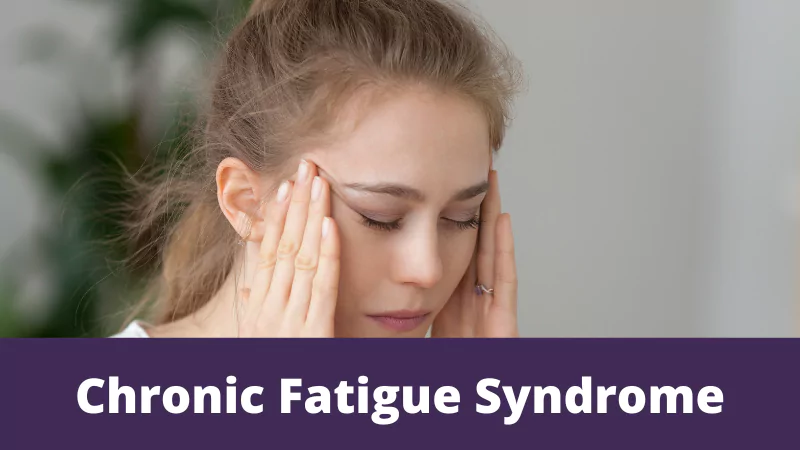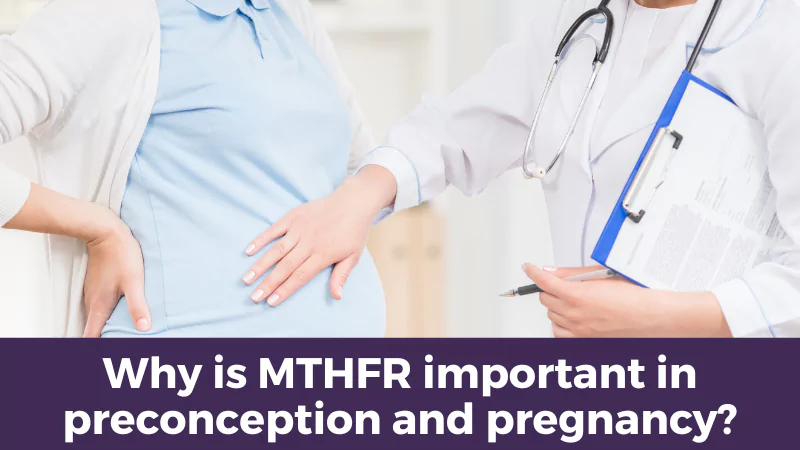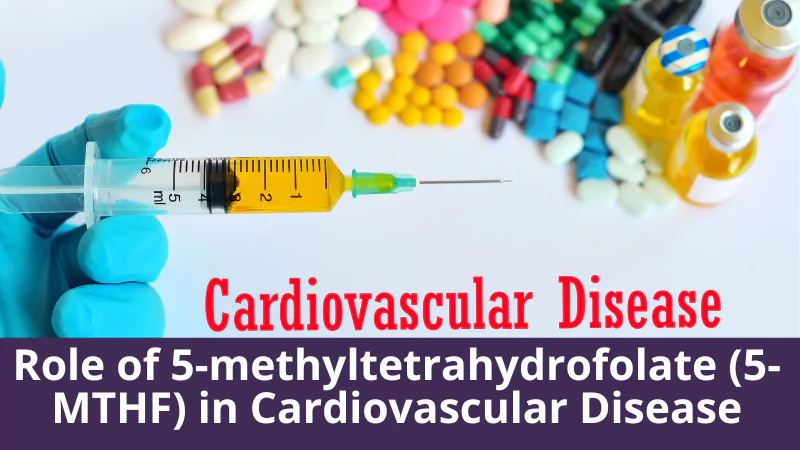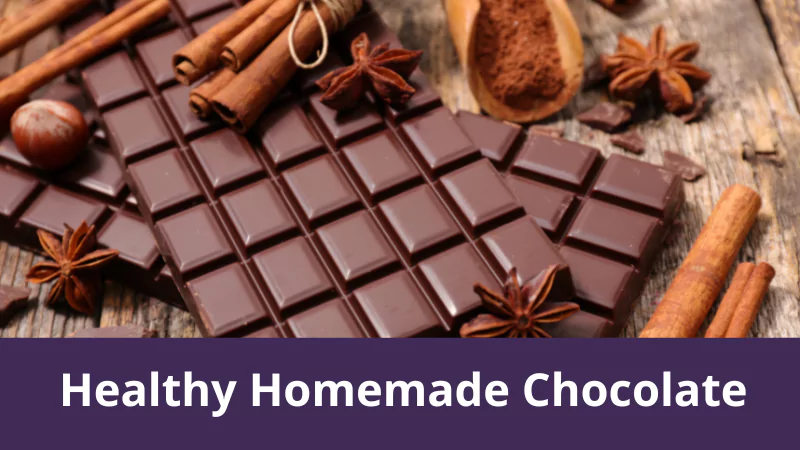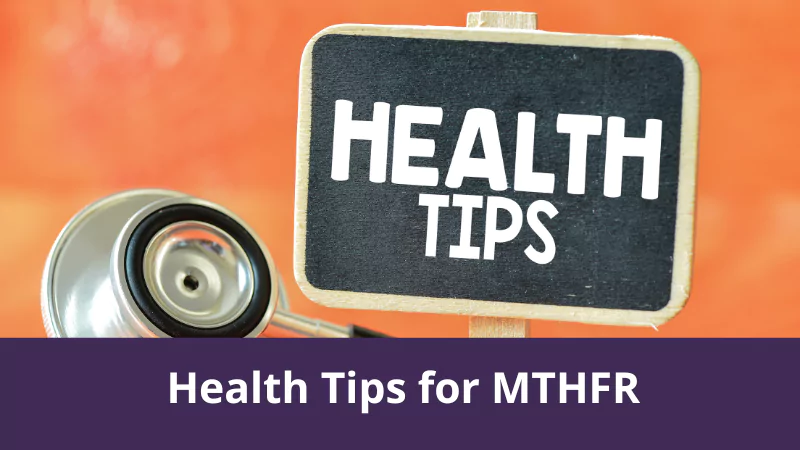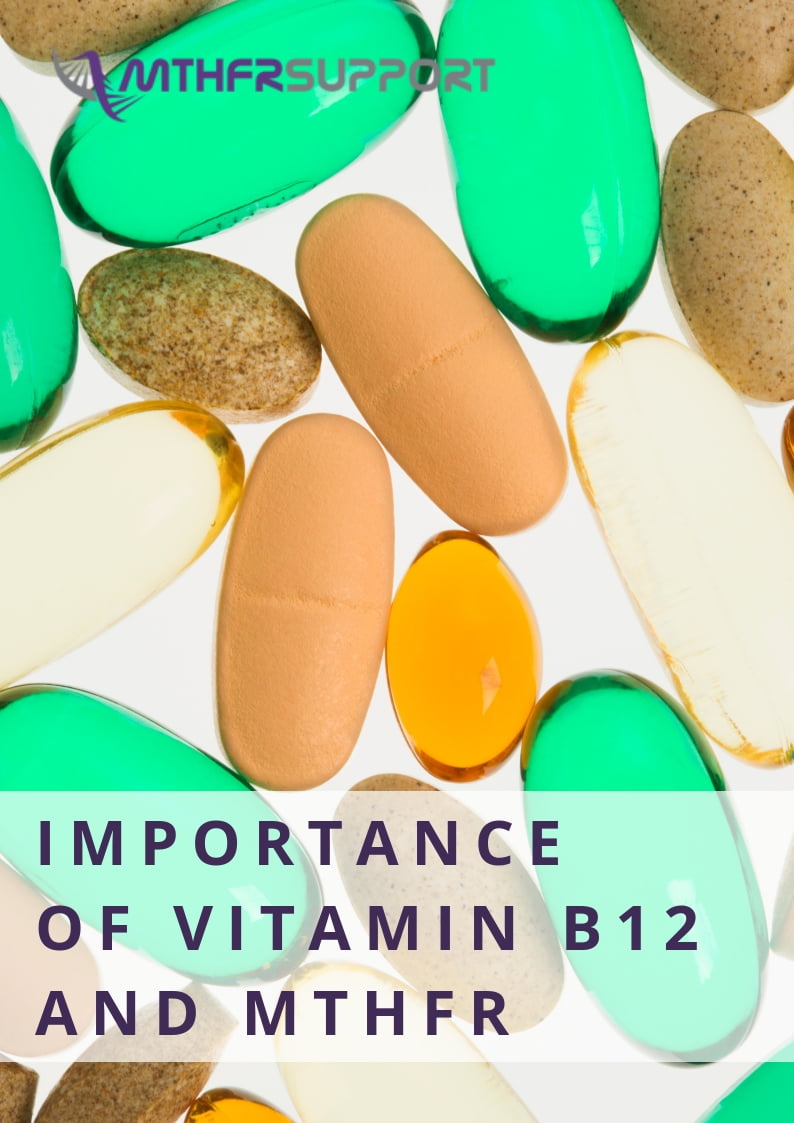‘Antioxidant’ is indeed the buzzword of the decade. A google search of the term brings up over 130 million results. We’re sure you’ve heard of antioxidant supplements and lists of top 10 foods containing antioxidants. But what does ‘antioxidant’ really mean?
Let’s start with the concept of oxidative stress. Introduced in 1985, oxidative stress was found to be a source of significant cell damage that could undermine the quality of cell DNA and proteins. It causes an imbalance between natural antioxidants (the good guys) and oxidants (the bad guys) in cells. Anything that depletes antioxidants, or increases numbers of destructive oxidants, resulted in oxidative stress (1).
Oxidative stress is associated with many diseases
Oxidative stress is associated with many diseases, including Alzheimer’s disease, Parkinson’s disease, diabetes, infertility, psychiatric illness, lung diseases, and COVID-19.
Today’s post will explore N-acetylcysteine (NAC) and its significant antioxidant benefits across different diseases. Could adding NAC on top of current treatment be useful? Follow us below for an in-depth analysis.
✤ Getting a knack for NAC
N-acetylcysteine, or NAC for short, is a tried-and-tested drug from the 60s that is the mainstay of therapy in acetaminophen (paracetamol) overdose. Paracetamol overwhelms the liver’s natural detoxification system, while NAC rescues the liver by acting as a glutathione (GSH) precursor. GSH is a crucial antioxidant molecule in the body. By replenishing GSH reserves in the liver, more toxic paracetamol metabolites are neutralised. NAC also directly scavenges reactive oxidant species (ROS) – these are the harmful free radicals that cause oxidative stress. (2)

Figure 1. The pathophysiology behind acetaminophen-associated liver injury and the role of N-acetylcystine. Image from (3)
Pharmacologically, NAC is a metabolite of the amino acid cysteine. It is available in oral, intravenous, and inhaled forms. Besides being a potent antioxidant, NAC is also historically used to ‘dissolve’ thick mucus in lung diseases such as cystic fibrosis and chronic obstructive pulmonary disease (COPD).
In the early 21st century, NAC began to emerge as a potential anti-inflammatory agent. NAC appeared to suppress the ‘master controller’ of inflammation in the body – the nuclear factor kappa beta (NF-κB) pathway (4). The NF-κB pathway is implicated in diseases like cancer, inflammatory bowel disease, arthritis, gastritis, and asthma, to name a few (5).
NAC may seem like a wonder drug
NAC may seem like a wonder drug at this point, given its antioxidant and anti-inflammatory abilities. However, as we’ll soon discuss, different NAC formulations and dosing regimens impart different effects in various diseases (some promising, some not so much). Read on to get a good picture of how NAC may help.
✤ NAC in liver disease
Most of us have that one relative who has regaled us with woes of their ‘fatty liver’, right? Medically known as non-alcoholic fatty liver disease (NAFLD), fatty liver disease affects nearly 25% of the world population. A significant feature of NAFLD is liver inflammation and oxidative stress due to fat build-up. Left uncontrolled, fatty liver disease morphs into liver cirrhosis and liver failure (6).
Studies on animal fatty liver models suggest that NAC may work by stopping fat accumulation in the liver
Clinical studies on NAC treatment in individuals with metabolic syndrome (a collection of disorders that includes insulin resistance, high cholesterol, obesity, and high blood pressure) found that long-term NAC treatment (1 up to 12 months, at doses of 600mg – 1000mg daily) improved liver function (6). Studies on animal fatty liver models suggest that NAC may work by stopping fat accumulation in the liver, as well as dampening oxidative stress and inflammation (6).
Besides, a meta-analysis and systematic review of 7 studies (883 patients) found that NAC treatment in those with non-paracetamol-related liver failure effectively improved overall survival and shortened duration of hospitalisation (7).
✤ NAC in heart health
NAC seems to have both direct and indirect benefits on our hearts. Four weeks of oral NAC in a study of 80 participants resulted in lower homocysteine levels and decreased blood pressures (8). High homocysteine level is a known risk factor for increasing the risk of heart disease, blood clots, and pregnancy complications in pregnant women (9).
The NACIAM trial, a study carried out in Adelaide, revealed that early initiation of high-dose intravenous NAC in patients with myocardial infarctions (in addition to regular treatment protocols) results in significantly smaller sizes of dead heart tissue (10).
✤ NAC in infertility
Sperm function is susceptible to oxidative stress – too much severely impairs the ability of sperm to swim while also causing defects in the precious DNA cargo (11). 600mg of daily oral NAC significantly improved sperm count, sperm motility while also reducing levels of abnormal sperm (12).
Higher ovulation and pregnancy rates were also noted in those treated with NAC
Similar effects were also seen in women with polycystic ovarian syndrome (PCOS), a disease caused by hormonal imbalances. Women with PCOS usually struggle with infertility. A large systematic review that examined 8 studies (910 women) found that NAC treatment (either alone or in combination with metformin – a diabetic drug commonly used in PCOS) notably boosted pregnancy success rates (13). Higher ovulation and pregnancy rates were also noted in those treated with NAC and either letrozole or clomiphene citrate, two other medications used to improve fertility in PCOS (14, 15).
✤ NAC and the brain
Perhaps the most unexpected area where NAC has been trialed is in the realm of brain diseases. The stuff that our brains are made of are notoriously complex and work in yet-to-be-fully understood ways. If our brain cells were the cables, then neurotransmitters (chemical messengers that relay information from one brain cell to another) were the electricity. Because everything works precisely, mere neurotransmitter imbalances give rise to mental health conditions such as schizophrenia and depression. Specific genetic mutations that cause abnormal protein accumulation cause neurodegenerative diseases like Alzheimer’s and Parkinson’s – both of which are common types of dementias that arise from certain parts of the brain decaying faster than others.
NAC modifies two key neurotransmitters – glutamate and dopamine. Glutamate is the most abundant neurotransmitter in the brain. Too much glutamate action on its receptor causes oxidative stress and neuron damage. NAC specifically works on a protein that controls glutamate activity (the cystine/glutamate antiporter) – resulting in reduced glutamate damage. Likewise, NAC also reduces oxidative stress from dopamine metabolism (16).
Besides suppressing oxidative stress from abnormal neurotransmitter activity, NAC also reduces brain inflammation
Besides suppressing oxidative stress from abnormal neurotransmitter activity, NAC also reduces brain inflammation (neuroinflammation). Neuroinflammation is another problem that is present in both mental health conditions and neurodegenerative diseases. NAC can theoretically tackle neurotransmitter imbalance, oxidative stress, and neuroinflammation – making it a logical candidate drug for these conditions (16).
A strong example of NAC’s potential benefits is in a study of soldiers who experienced mild traumatic brain injury (TBI) due to blasts. Soldiers who received high dose early NAC treatment (between 3-4g daily for a week) were 3.6 times more likely to have resolved symptoms of hearing loss, headache, confusion, memory loss, and poor sleep (17).
✤ NAC in mental health
The effects of NAC on mental health disorders are a mixed bag. For example, NAC supplements in those with obsessive-compulsive disorder yielded minor results in adults but had some in children (18, 19). Some studies showed that high-dose NAC (2g for 3 months) improved depression symptoms, while others reported that NAC only showed promise in treating depressive episodes in bipolar mood disorder (20, 21).
However, some mental health conditions like substance-use disorders, schizophrenia, and autism, have had clear benefits after NAC treatment. It may be because substance-use disorders are built upon abnormal glutamate neurotransmission, and that schizophrenia heavily features dopaminergic dysfunction (22).
Despite modern medicine having grown by leaps and bounds in the last decade, neurological diseases remain an area where current therapy remains suboptimal. Inconsistencies across different mental health conditions reflect how little we really understand about brain disorders. More studies dissecting the optimal dose of NAC and how it helps heal the brain are needed more than ever.
✤ NAC in lung diseases and COVID-19
NAC is a well-known mucolytic and is commonly used in its oral or inhaled form by patients with lung disease to help break up thick sputum. Moreover, cystic fibrosis, idiopathic pulmonary fibrosis, and COPD also have elevated oxidative stress and inflammation levels in common, both of which could be attenuated with NAC (23).
This brings us to COVID-19 – could the infamous ‘cytokine storm’ that wreaks havoc be dampened with NAC? The COVID-19 cytokine storm is a feared complication that causes the body to go into a vicious, inflammatory state, causing multiorgan failure and eventually death (24). With its previous success in preventing the severity and duration of influenza (the common cold), NAC was scrutinized in the context of COVID-19 (24).
There are 3 ways that NAC may help in COVID-19
There are 3 ways that NAC may help in COVID-19. Firstly, NAC could stop viral replication. Secondly, it could dampen the immune response. Thirdly, the COVID-19 cytokine storm severely depletes glutathione stores, allowing massive amounts of reactive oxygen species to collect. As we pointed out earlier, NAC is a rich source of GSH, thus restoring the oxidative imbalance in COVID-19 (25).
Another feature of COVID-19 infections is severe acute respiratory distress syndrome (ARDS), a condition also marked by significant oxidative stress. A meta-analysis that included five randomized controlled trials found that NAC reduced the duration of intensive care needs in patients with ARDS. However, mortality rates and oxygen requirements did not change after NAC treatment (26).
Whether this translated to better overall outcomes or faster recovery could not be determined
Unfortunately, clinical studies on NAC use in real-life COVID-19 infections are far and few. Only one case series of 9 patients documents that intravenous NAC could reduce inflammatory markers in COVID-19 – whether this translated to better overall outcomes or faster recovery could not be determined (27). Several clinical trials examining NAC in COVID-19 have been planned –NCT04545008, NCT04419025, NCT04455243, and NCT04374461.
✤ Is NAC safe?
NAC is generally well tolerated orally, with most people experiencing mild adverse effects like nausea and vomiting. Its unpleasant smell that smells like sulfur is more of a deterrent than anything else. A small risk with intravenous formulations is allergic reactions, ranging from flushing, itching, swelling of the lips and throat to difficulty breathing and low blood pressure (23).
A significant problem with NAC is that the amount of active drugs available after being digested as a pill is very low, thus often requiring large amounts of medication ingestion. To complicate things, NAC pill metabolism is heavily dependent on liver and kidney functions. For example, NAC tends to accumulate in the body in those with damaged liver and/or kidneys. This is important, as it means these people may need less medication to achieve the same blood levels of active ingredient as healthy people (23).
N-Acetyl Cysteine: An Old Drug with New Tricks Video
This is a practitioner presentation to share with you the many uses of NAC that you might not currently be aware of.
FREE for Members of the InstituteNot a member? Sign up to the Institute now.*You must be signed in to the Institute Portal to watch the video for free. Not an Institute Member? Sign-up now to get complimentary access to this video and all our monthly deep dives and practitioner trainings.
References
- Sies H. Oxidative Stress: Concept and Some Practical Aspects. Antioxidants (Basel). 2020;9(9).
- Ershad M NA, Vearrier D. N Acetylcysteine Treasure Island (FL): StatPearls Publishing; 2021 Jun 29 [
- Chang L, Xu D, Zhu J, Ge G, Kong X, Zhou Y. Herbal Therapy for the Treatment of Acetaminophen-Associated Liver Injury: Recent Advances and Future Perspectives. Frontiers in Pharmacology. 2020;11(313).
- Pei Y, Liu H, Yang Y, Yang Y, Jiao Y, Tay FR, et al. Biological Activities and Potential Oral Applications of N-Acetylcysteine: Progress and Prospects. Oxid Med Cell Longev. 2018;2018:2835787.
- Park MH, Hong JT. Roles of NF-κB in Cancer and Inflammatory Diseases and Their Therapeutic Approaches. Cells. 2016;5(2):15.
- Dludla PV, Nkambule BB, Mazibuko-Mbeje SE, Nyambuya TM, Marcheggiani F, Cirilli I, et al. N-Acetyl Cysteine Targets Hepatic Lipid Accumulation to Curb Oxidative Stress and Inflammation in NAFLD: A Comprehensive Analysis of the Literature. Antioxidants. 2020;9(12):1283.
- Walayat S, Shoaib H, Asghar M, Kim M, Dhillon S. Role of N-acetylcysteine in non-acetaminophen-related acute liver failure: an updated meta-analysis and systematic review. Ann Gastroenterol. 2021;34(2):235-40.
- Hildebrandt W, Sauer R, Bonaterra G, Dugi KA, Edler L, Kinscherf R. Oral N-acetylcysteine reduces plasma homocysteine concentrations regardless of lipid or smoking status. Am J Clin Nutr. 2015;102(5):1014-24.
- Moll S, Varga EA. Homocysteine and <i>MTHFR</i> Mutations. Circulation. 2015;132(1):e6-e9.
- Pasupathy S, Tavella R, Grover S, Raman B, Procter NEK, Du YT, et al. Early Use of N-acetylcysteine With Nitrate Therapy in Patients Undergoing Primary Percutaneous Coronary Intervention for ST-Segment-Elevation Myocardial Infarction Reduces Myocardial Infarct Size (the NACIAM Trial [N-acetylcysteine in Acute Myocardial Infarction]). Circulation. 2017;136(10):894-903.
- Wagner H, Cheng JW, Ko EY. Role of reactive oxygen species in male infertility: An updated review of literature. Arab J Urol. 2018;16(1):35-43.
- Jannatifar R, Parivar K, Roodbari NH, Nasr-Esfahani MH. Effects of N-acetyl-cysteine supplementation on sperm quality, chromatin integrity and level of oxidative stress in infertile men. Reprod Biol Endocrinol. 2019;17(1):24-.
- Thakker D, Raval A, Patel I, Walia R. N-acetylcysteine for polycystic ovary syndrome: a systematic review and meta-analysis of randomized controlled clinical trials. Obstet Gynecol Int. 2015;2015:817849.
- Mostajeran F, Tehrani HG, Rahbary B. N-Acetylcysteine as an Adjuvant to Letrozole for Induction of Ovulation in Infertile Patients with Polycystic Ovary Syndrome. Adv Biomed Res. 2018;7:100-.
- Salehpour S, Sene AA, Saharkhiz N, Sohrabi MR, Moghimian F. N-Acetylcysteine as an adjuvant to clomiphene citrate for successful induction of ovulation in infertile patients with polycystic ovary syndrome. J Obstet Gynaecol Res. 2012;38(9):1182-6.
- Berk M, Malhi GS, Gray LJ, Dean OM. The promise of N-acetylcysteine in neuropsychiatry. Trends Pharmacol Sci. 2013;34(3):167-77.
- Hoffer ME, Balaban C, Slade MD, Tsao JW, Hoffer B. Amelioration of acute sequelae of blast induced mild traumatic brain injury by N-acetyl cysteine: a double-blind, placebo controlled study. PLoS One. 2013;8(1):e54163-e.
- Sarris J, Oliver G, Camfield DA, Dean OM, Dowling N, Smith DJ, et al. N-Acetyl Cysteine (NAC) in the Treatment of Obsessive-Compulsive Disorder: A 16-Week, Double-Blind, Randomised, Placebo-Controlled Study. CNS Drugs. 2015;29(9):801-9.
- Li F, Welling MC, Johnson JA, Coughlin C, Mulqueen J, Jakubovski E, et al. N-Acetylcysteine for Pediatric Obsessive-Compulsive Disorder: A Small Pilot Study. J Child Adolesc Psychopharmacol. 2020;30(1):32-7.
- Minarini A, Ferrari S, Galletti M, Giambalvo N, Perrone D, Rioli G, et al. N-acetylcysteine in the treatment of psychiatric disorders: current status and future prospects. Expert Opin Drug Metab Toxicol. 2017;13(3):279-92.
- Hasebe K, Gray L, Bortolasci C, Panizzutti B, Mohebbi M, Kidnapillai S, et al. Adjunctive N-acetylcysteine in depression: exploration of interleukin-6, C-reactive protein and brain-derived neurotrophic factor. Acta Neuropsychiatr. 2017;29(6):337-46.
- Dean O, Giorlando F, Berk M. N-acetylcysteine in psychiatry: current therapeutic evidence and potential mechanisms of action. J Psychiatry Neurosci. 2011;36(2):78-86.
- Tenório MCdS, Graciliano NG, Moura FA, Oliveira ACMd, Goulart MOF. N-Acetylcysteine (NAC): Impacts on Human Health. Antioxidants. 2021;10(6):967.
- Shi Z, Puyo CA. N-Acetylcysteine to Combat COVID-19: An Evidence Review. Ther Clin Risk Manag. 2020;16:1047-55.
- Khanfar A, Al Qaroot B. Could glutathione depletion be the Trojan horse of COVID-19 mortality? Eur Rev Med Pharmacol Sci. 2020;24(23):12500-9.
- Zhang Y, Ding S, Li C, Wang Y, Chen Z, Wang Z. Effects of N-acetylcysteine treatment in acute respiratory distress syndrome: A meta-analysis. Exp Ther Med. 2017;14(4):2863-8.
- Ibrahim H, Perl A, Smith D, Lewis T, Kon Z, Goldenberg R, et al. Therapeutic blockade of inflammation in severe COVID-19 infection with intravenous N-acetylcysteine. Clin Immunol. 2020;219:108544.

